These Filipino artists are thriving in the Netherlands

As the Netherlands is home to some of the greatest painters in the world — Vincent van Gogh, Rembrandt, Johannes Vermeer and Piet Mondrian just to name a few — the works of these painters have inspired many Filipino talents living in the country to pursue their passion for the arts.
And while many enjoy painting as a hobby, a few Filipinos in the Netherlands have managed to transform their passion for the arts into their full time livelihood and profession. Let’s meet some of the Filipino painters in the Netherlands who thrive in their profession in the arts.
Chelony Mercado-Lelieveld: “Pinay Painter” in Holland
Having lived in Europe for 10 years, Chelony knows her way around the art scene in the Netherlands and has in fact mounted several solo and group art exhibitions in Brugge, Antwerp, London, Eindhoven, Breda, and The Hague.
In 2010, she went to an arts and language school in Belgium and finally moved to the Netherlands in 2012, when she married her husband Erwin Lelieveld.
But before she became a successful artist in the Netherlands, she was an ordinary kid who loved to draw. “My parents used to say that I love drawing on our walls using charcoal and crayons. They said that I am a natural-born artist. Growing up, I have been using and discovering art materials like coffee and plants,” she fondly recounted.
Today, Chelony uses oil paint in most of her artworks and has been learning to use color pastels recently. She is greatly inspired by the works of Filipino painters such as Fernando Amorsolo, Grandier Gil Bella and Marko Bello. She is also inspired by the vibrant colors and landscape of artists Vincent van Gogh and Fridah Kahlo.
“There are two kinds of styles that define me: realism and pop art. One thing in common about them: I use brush strokes,” she said.
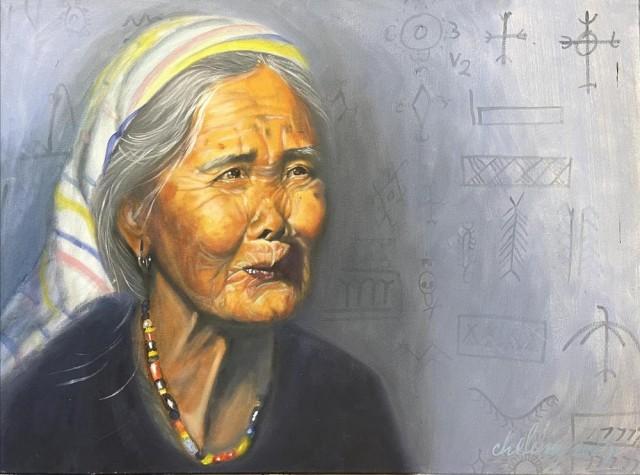
Her paintings usually portray human or animals, natural landscapes, and still life. Most of the topics also revolve around Filipino culture. “I want to introduce our culture and people to my second home. As an artist, I think that it's the greatest contribution that I can give to my homeland Philippines,” she said.
Working as a full-time artist, Chelony holds online and physical art classes and workshops. She also offers wine and painting activities to aspiring painters of all ages.
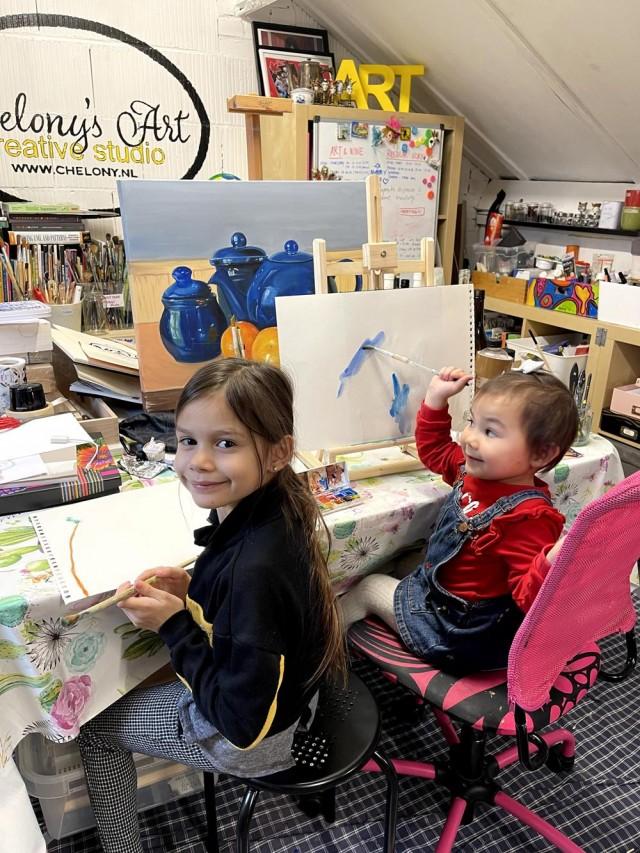
She is set to hold an art exhibition in the Philippine Embassy in the Netherlands in June 2021. By the end of 2021, her works will be featured in New York by pianist-composer Margin Alexander.
Jesamine Totañes: Urban Sketching
Born in Butuan and raised in Las Piñas, urban sketcher and freelance artist Jesamine Totañes has been living in the Netherlands for almost nine years.
When she first came to the Netherlands in 2012, she was extremely homesick. Missing the Philippine culture and longing to relive some of her childhood memories, Jesamine turned to painting Filipino landscapes and cultural scenes. The homesickness lasted for a few months until Jesamine decided to join art groups in the Netherlands to integrate.

“When I first started as an artist, I struggled making a name in the Netherlands," Began Jesamine who considers Frida Khalo and Gustav Klimt among her inspirations.
"It is difficult to establish a name here especially if you’re new, but I persisted and tried to make my own style. I just did my own thing and continued to do it.”
Jesamine likes to paint cityscapes and loves sketching outside. Sketching on the spot or sketching on location has been a way for her to capture the rawness of the present moment.
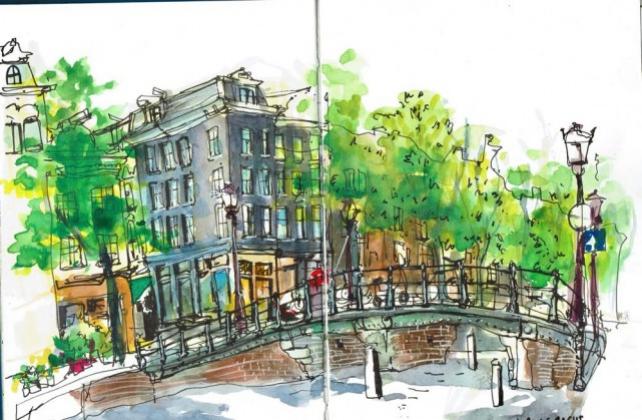
“I always sketch cities where I have been. I bring a sketchbook with me all the time to try and sketch the atmosphere around me. I use this too to study a particular subject. Sometimes it becomes a painting on canvas, but sometimes it's just an art piece in my sketchbook. Art supplies companies like Koval Sketchbook, Stablo France, Derwent and Winsor and Newton sponsored me with my materials on sketching,” she said.
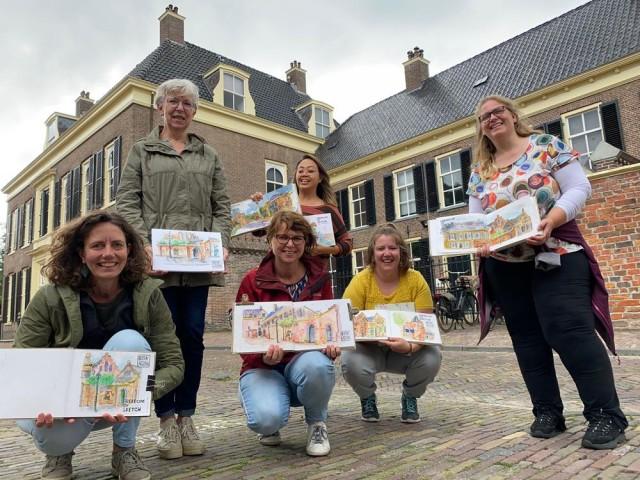
Jesamine has sketched in many cities in the Philippines, France, Belgium, Denmark, Germany and the Netherlands. Currently, she works as a freelance creative instructor and one of the moderators of Urban Skechers Assen, officially a member of Urban Sketcher Nederlands.
She also works as an illustrator, collaborating with different companies like Koval Sketchbooks from Poland.
During the 15-day lockdown in March, sketching became a way for Jesamine to cope with boredom. Jesamine challenged her Instagram followers and other sketchers to do a “quarantine sketch” about anything that they can see in their homes.
“I launched a hashtag on Instagram ‘Whatsindahouse’ in order to encourage people who feel alone and bored during the lockdown period to do something fun and creative,” Jesamine said.
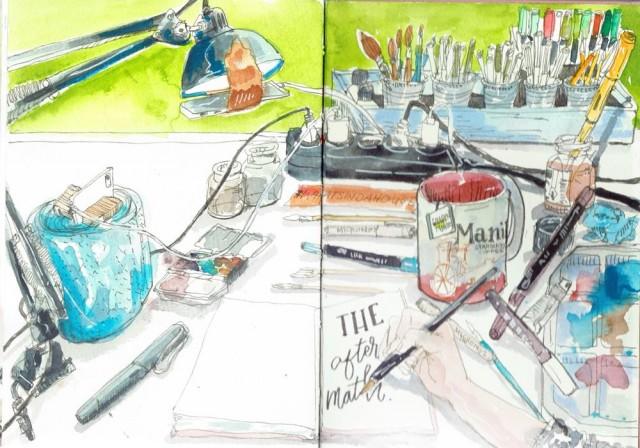
“I had a follower in Austria who was sick with cancer and COVID-19. She messaged me personally that the challenges have been giving her faith and hope during the quarantine period. That gave me a lot of purpose to continue doing the challenge. A few months later, I learned that she died from the sickness,” she said.
The “Whatsindahouse” challenge continued for three to four months and has inspired many of her followers to try art and sketching during the period of crisis.
Jesamine recently launched her own sketching workshop called “Freedom of Sketch” to inspire others to sketch freely and enjoy the process of recording memories through sketching.
Victor Cantal: A visual artist and an activist
In a tiny stall during the Embassy Festival in The Hague, one can often find the works of Filipino artist and activist Victor Cantal. His paintings usually portray Filipino culture, politics and other social issues because for him, art is a form of social commentary.
“I like working with subjects celebrating the Philippines/Filipino culture. Political, social, and environmental subjects also interest me. I always side with the underdogs — the victims of human rights, the poor who don’t have equal access, or the communities who are underrepresented,” Victor said.
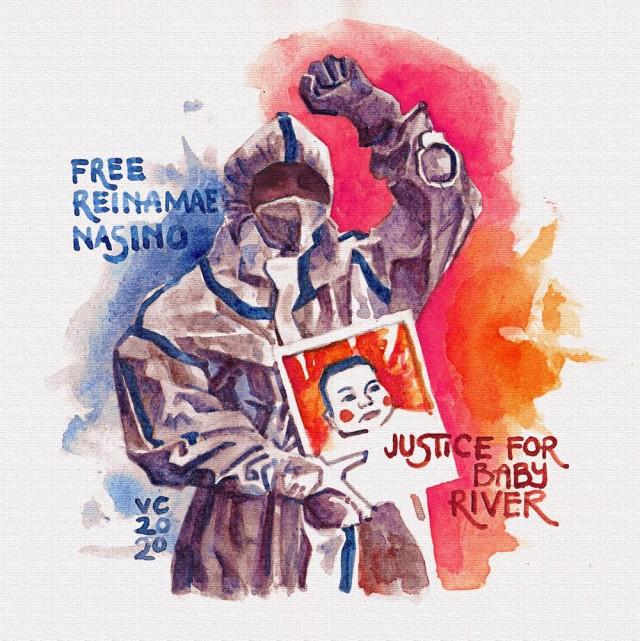
“I guess activism never left me. I was very active in the student movement when I was in university. Now that I have a family, painting has become my most convenient outlet to express those ideas.”
Victor started to become involved in arts at an early age and graduated with a degree in Fine Arts at the University of San Carlos, Cebu. In 2008, he had a big break working in an international company in Bangkok as a graphic designer until he left for the Netherlands in 2016 to accompany his wife who is taking her PhD.
“I rediscovered my passion for drawing and painting. I love it so much that I couldn’t stop. One thing led to another. After that, I was drawing everything I like - places, maps, food - until I finally decided to get more serious in the fine art of painting.
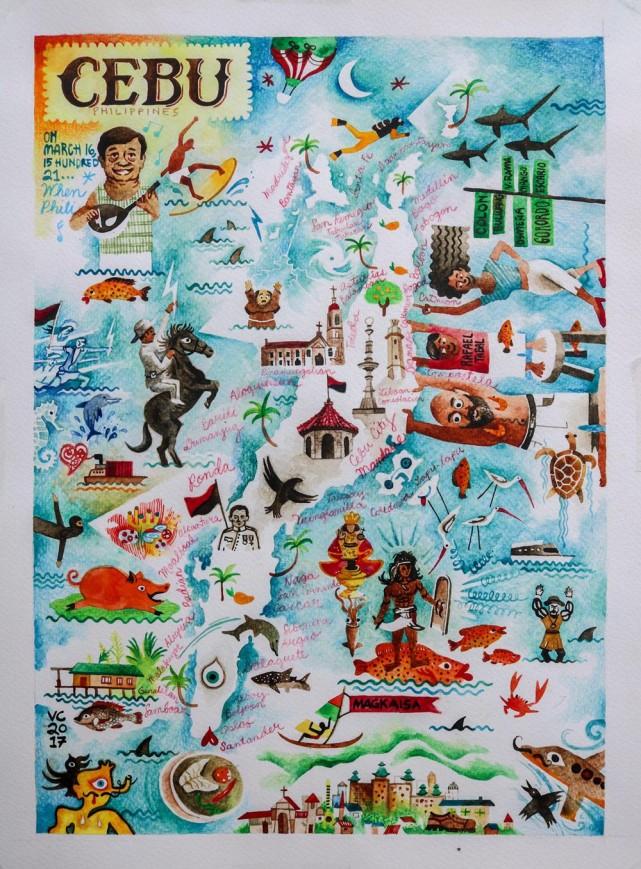
At the moment, Victor has a fulltime job designing magazines, illustrating articles and art directing. In his free time, he continues to paint, often using charcoal, graphite pencil, oil paint and sometimes watercolor as medium.
“I think I am more drawn into figurative or realism than abstract art. It’s a focus that changed since I started attending atelier classes,” he said.
Victor takes inspiration from Filipino and foreign artists and continues to learn various styles and techniques.
“I am paying close attention to the works of Fernando Amorsolo and Vicente Manansala. Both of them have successfully depicted the Filipino sensibility, quite differently though. Amorsolo’s subjects were more into the idyllic scenes and optimistic. While Manansala’s were more focused into the social environment. In terms of style, I look at Amorsolo for his painterly style and his masterful use of light. For Manansala, I like the cubist aspect of his works, it’s not the kind of cubism that you see in a Picasso, his is more geometric and still figurative in a sense that you can still identify the subject — I love that and I want to learn that style,” he said.
For inspiration on illustration, Victor follows the work of Dutch Golden Age painters such as Rembrandt, Frans Hals and Vermeer.
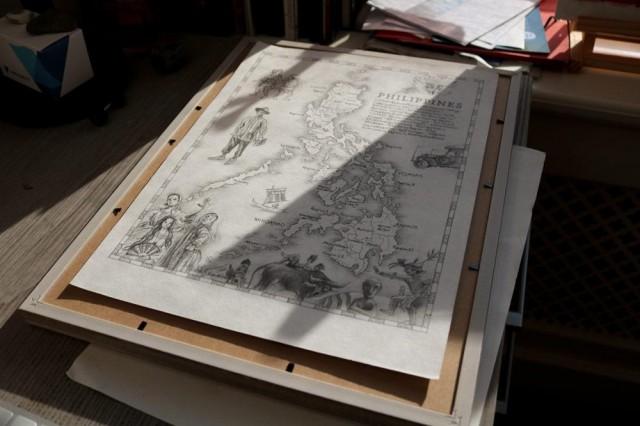
Currently, Victor is working on big canvasses for a planned exhibit next year. He is also trying to finish a picture book about the Philippines during the pre-war era.
“It’s a personal project that I’ve been trying to finish for many years. Becoming a full time painter is my ultimate goal but I’m taking it one step at a time. Right now, my main focus is getting better, building a body of work and making connections,” he said.
While these Filipino artists each have their own medium, technique, and art journey, one thing is common: they all showcase their home country, the Philippines, in their own unique way. Art has been a way for many Filipinos living in the Netherlands to adjust and adapt to new cultures and life outside the Philippines. It is their way to remember and reminisce, to record special memories, or to make a statement on issues that matter most to them. — LA, GMA News





